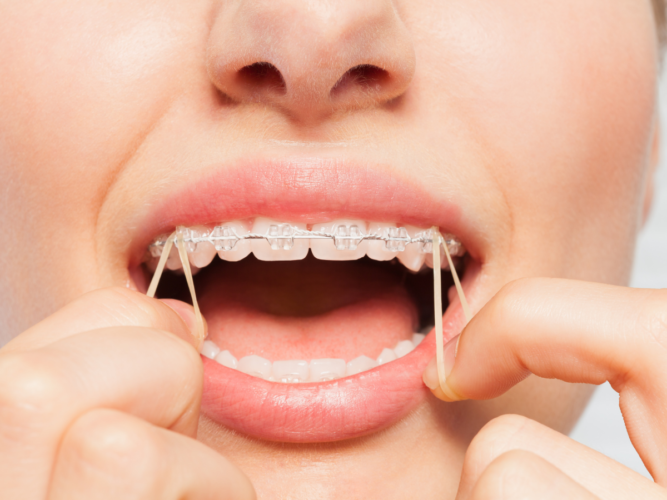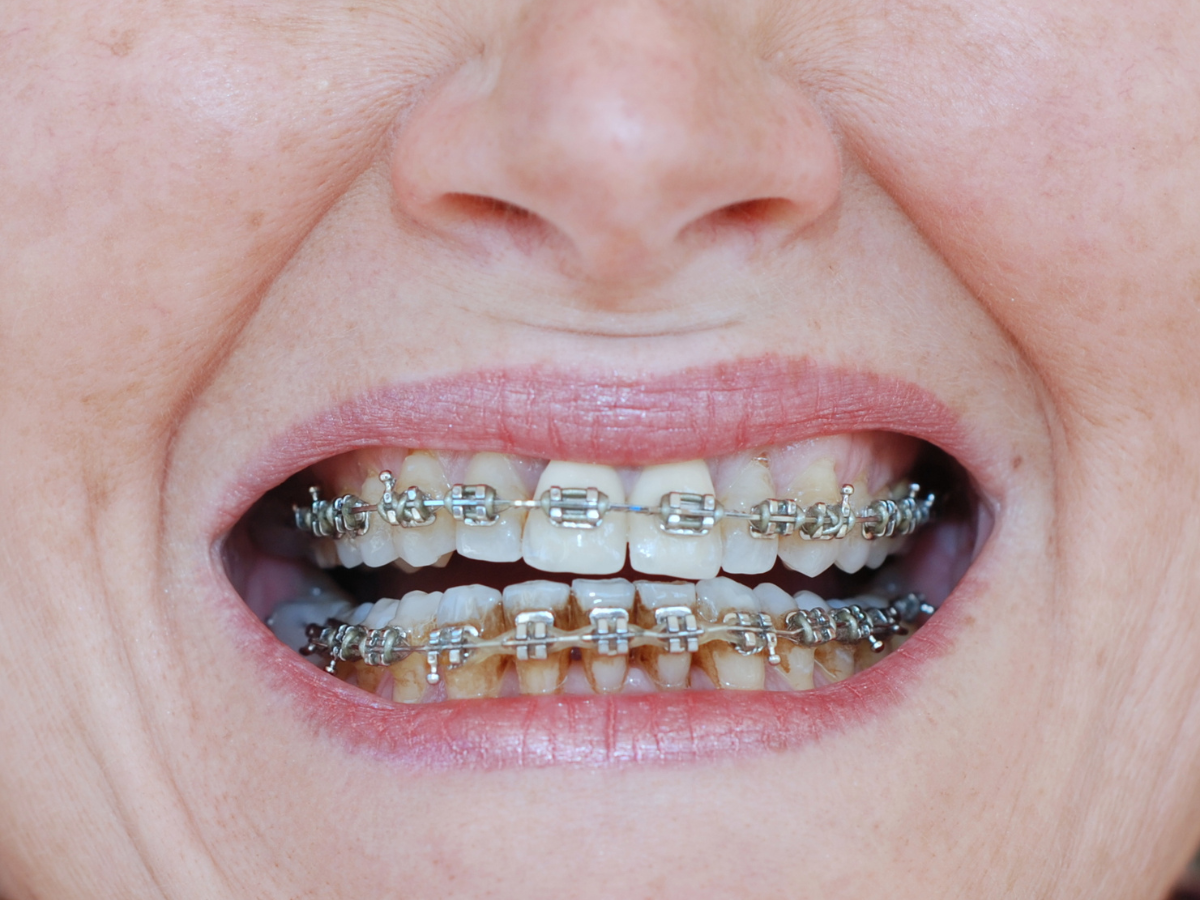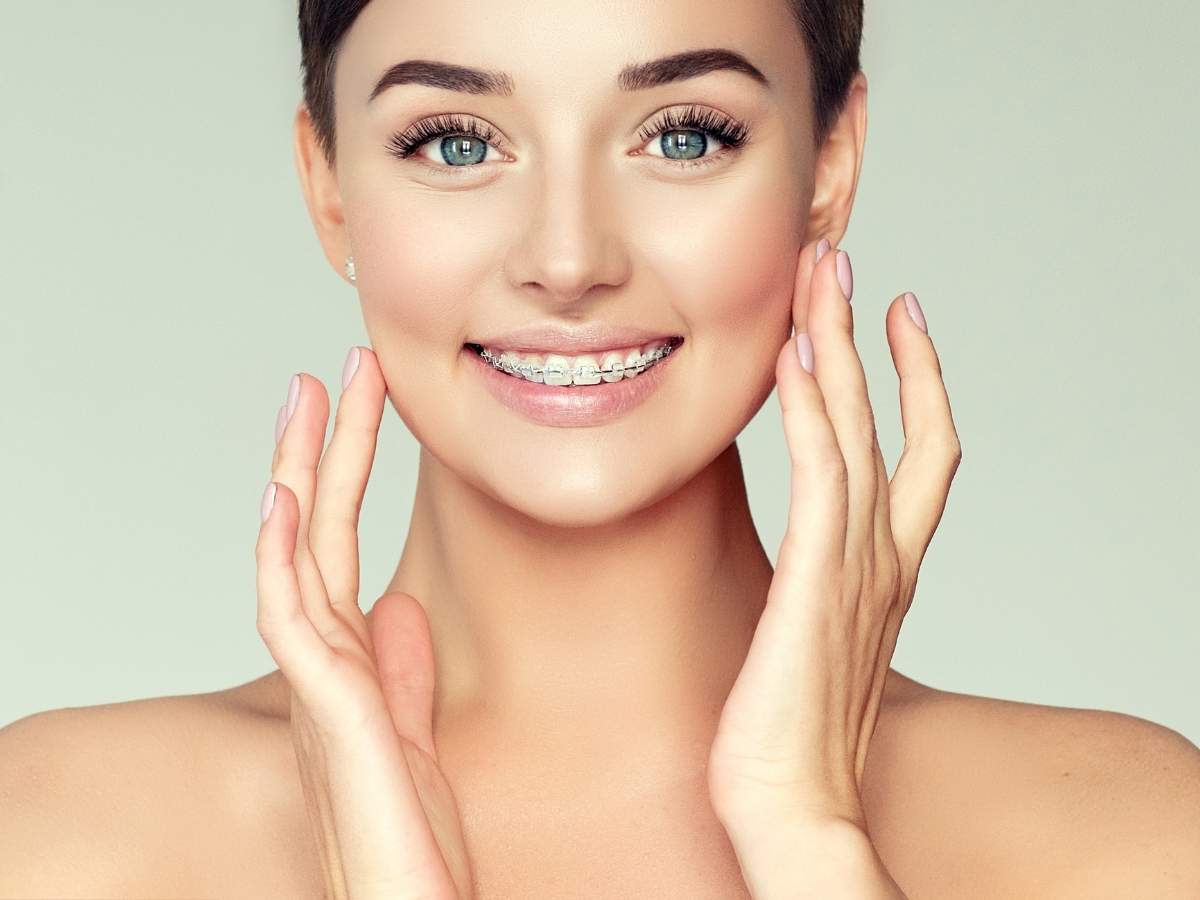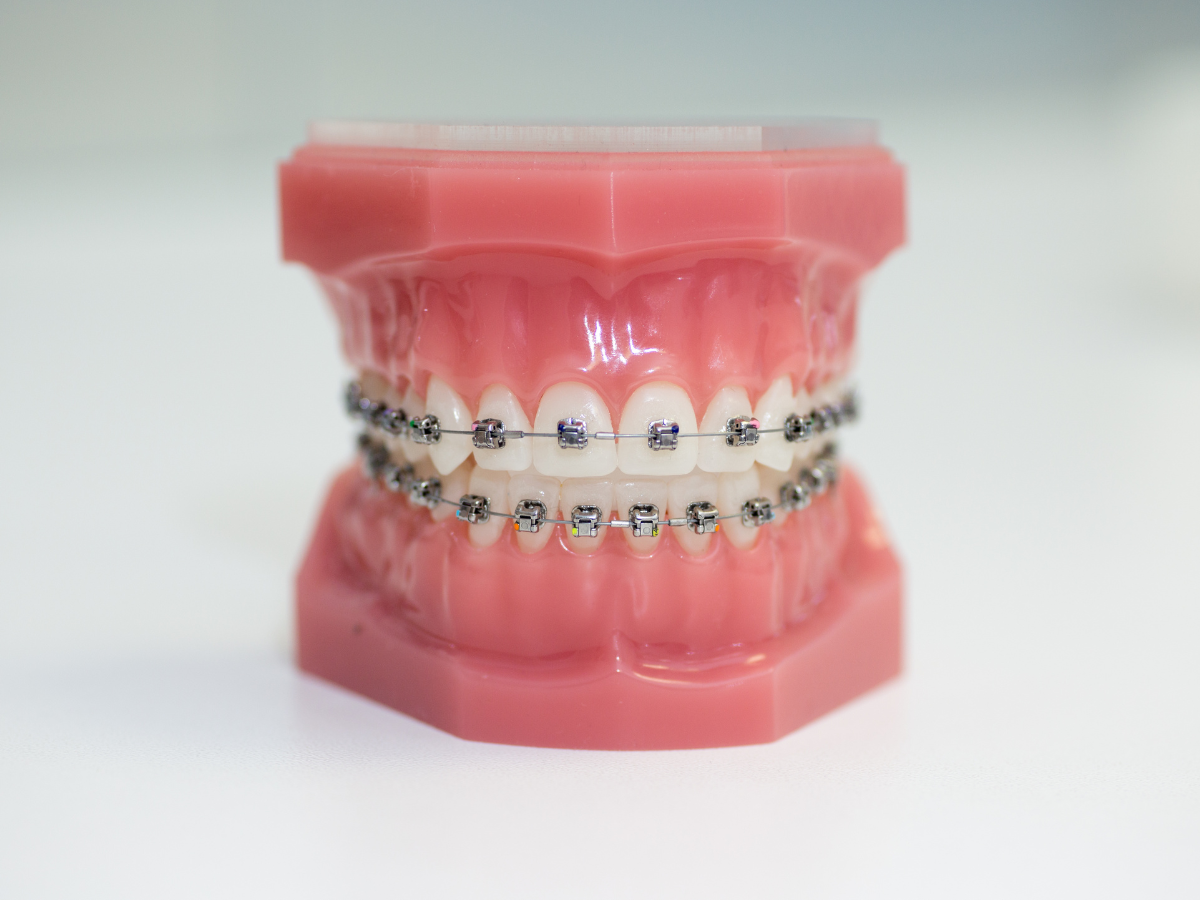Orthodontic treatment can be a transformative journey but often comes with its fair share of adjustments and challenges. One of these challenges is navigating the world of eating with rubber bands on braces. Rubber bands, also known as elastics, play a crucial role in orthodontic treatment by helping to correct bite issues and align the teeth. However, many individuals undergoing orthodontic treatment may wonder if eating with rubber bands on their braces is possible. In this blog post, titled “Can You Eat With Rubber Bands On Your Braces?” we will discuss the process of eating with rubber bands on braces. We will provide helpful tips for adjusting to eating, choosing the right foods, and mastering chewing techniques. Whether you are a newcomer to braces or have been wearing them for a while, this guide will offer valuable insights and guidance to help you easily manage mealtimes.
The Use of Rubber Bands in Orthodontic Treatment
Orthodontic treatment often involves using rubber bands, also known as elastics, to assist in correcting bite issues and guiding teeth into the correct position. These rubber bands are customized for each patient and are placed on the brackets of the braces.
Rubber bands provide additional pressure to move the teeth in orthodontic treatment. They work together with braces to align the teeth and jaws. Regularly wearing rubber bands is essential to guide the teeth into the desired position.
Orthodontic rubber bands are made from medical-grade latex, which is safe to use in the mouth. They are designed to be comfortable and should not cause irritation or discomfort.
When wearing rubber bands, some adjustments to eating habits may be necessary. It may be difficult to open the mouth wide enough to eat certain foods with rubber bands in place, so it is recommended to remove them during meals to make eating more comfortable.
Orthodontic staff will demonstrate how to properly attach the rubber bands to ensure they are placed correctly on the brackets. Following their instructions and wearing the rubber bands as directed is essential to achieve the desired results.
Although modifications may need to be made to eating habits, patients can still eat generally with some adjustments. Avoiding sticky, complex, or chewy foods is essential, as these can damage the braces and rubber bands. Maintaining good oral hygiene by brushing and flossing regularly is essential to keep the braces and rubber bands clean.
In summary, using rubber bands in orthodontic treatment is essential to aligning the teeth and correcting bite issues. Wearing them consistently and following the instructions of the orthodontic staff will help achieve the desired results. While some adjustments may need to be made to eating habits, patients can still enjoy a regular diet with proper care and precautions.
Adjusting to Eating with Rubber Bands on Braces
Now that you understand the importance of wearing rubber bands during your orthodontic treatment let’s discuss how it can affect your eating habits and ways to adjust.
Wearing rubber bands consistently is crucial to achieving the desired results in your orthodontic treatment. If you wear them one day and leave them off the next, the movement of your teeth will be significantly slowed down, ultimately delaying your treatment plan. Following your orthodontist’s instructions and wearing your rubber bands faithfully is essential to ensure a faster and more comfortable experience.
While wearing rubber bands can sometimes be uncomfortable, it is necessary for the success of your treatment. These elastics apply gentle pressure to move your teeth and improve jaw alignment. This process helps correct bite issues and align your jaws properly.
Eating with rubber bands might be challenging when wearing braces. You can relish your meals if you make a few changes. Generally speaking, taking your rubber bands off before eating is best. However, there may be times when you can decide to wear them anyway, as when consuming soft foods or snacks.
Pay attention to the kinds of foods you eat if you choose to eat with your rubber bands on. Avoid chewy, complicated, or sticky foods since they can harm your braces’ rubber bands or cause your teeth to become stuck. Instead, choose softer foods that are simpler to chew and won’t put too much stress on your braces.
Practising proper hygiene and cleaning your teeth and braces thoroughly after each meal is crucial. Food particles can easily get trapped in your braces, leading to plaque buildup and potential oral health issues. Use a soft-bristled toothbrush and floss carefully to remove food debris and maintain good oral hygiene throughout treatment.
Choosing the Right Foods to Eat with Rubber Bands on Braces
You must be careful about the foods you eat while receiving orthodontic treatment with braces and rubber bands to avoid discomfort or harm to the braces. While wearing braces does not prevent you from eating anything, you must consume some foods cautiously.
When you have rubber bands on your braces, selecting soft meals that are simple to chew is a good idea. Soups, mashed potatoes, yoghurt, scrambled eggs, and veggies are a few delicious possibilities. You can eat comfortably because these foods are less likely to put too much pressure on your braces.
However, it’s important to avoid sticky, complex, or crunchy foods that can get stuck in your braces or even cause damage. Foods like caramel, popcorn, nuts, and hard candies should be avoided to prevent any potential harm to your braces.
When eating with rubber bands on, it’s important to chew slowly and carefully to prevent discomfort or potential damage. Be mindful of the positioning of your teeth, and try to distribute the pressure evenly while chewing. This will help ensure your braces and rubber bands are not strained or under excessive pressure.
It’s important to understand that orthodontic treatment requires a commitment to improving dental health and self-confidence. Although some dietary adjustments may be necessary during this period, prioritizing oral health and following the orthodontist’s recommendations is crucial. You can continue to enjoy your favourite foods by choosing the right foods to eat with rubber bands on braces while taking care of your orthodontic treatment.
Chewing Techniques and Tips for Eating with Rubber Bands on Braces
Special care must be taken to avoid damaging the braces or getting food stuck when eating with braces. It’s vital to prioritize soft, non-sticky, and easy-to-chew foods to ensure the safety of your braces. Hard and crunchy foods should be avoided as they can pressure the teeth and potentially damage the braces or cause them to become loose or fall out.
One technique that can provide additional support while eating is using rubber bands before meals. This can help align the jaws and provide muscle training for better tooth movement. Rubber bands can prevent discomfort and ensure your braces stay in place while enjoying your meals.
Adjusting and following the recommended guidelines makes it possible to continue enjoying your favourite foods while wearing braces and rubber bands. By being mindful of the foods you choose to eat and taking the necessary precautions, you can maintain the health of your braces and ensure successful treatment outcomes.
In the world of orthodontics, elastic bands play a crucial role in achieving a perfect smile. This blog will address a series of questions to provide you with a comprehensive understanding of the significance, usage, and impact of rubber bands in orthodontic treatment.
What Role Do Elastic Bands Play In Orthodontics?
Understanding the fundamental role of elastic bands in orthodontics and how they contribute to the overall effectiveness of braces.
When Do You Start Wearing Rubber Bands For Braces?
Exploring the timing and reasons behind the introduction of rubber bands into your orthodontic treatment.
Does Everyone Wear Rubber Bands With Their Braces?
Clarifying whether wearing rubber bands is a universal aspect of orthodontic treatment or if it varies from case to case.
Do Rubber Bands Move Your Jaw Or Teeth?
Detailing the mechanics of how rubber bands work to facilitate the movement of your jaw and teeth for optimal alignment.
How Fast Do Elastics Move Teeth?
Examining the speed at which elastic bands can bring about changes in the positioning of your teeth during orthodontic treatment.
Can Rubber Bands Pull Your Teeth Out?
Addressing concerns and misconceptions regarding the safety and impact of using rubber bands in orthodontics.
Can You Eat With Rubber Bands On Your Braces?
Providing guidelines on maintaining proper oral hygiene and eating habits while wearing rubber bands with braces.
Can You Wear Rubber Bands While Sleeping?
Exploring whether wearing elastic bands during sleep is recommended and the potential benefits associated with it.
How Will I Know If The Rubber Bands Are Working?
Highlighting signs of progress and key indicators that your orthodontic rubber bands are effectively doing their job.
Will The Rubber Bands Change The Appearance Of My Face?
Discussing any potential aesthetic changes that may occur as a result of wearing rubber bands during orthodontic treatment.
Can I Double Up My Rubber Bands?
Addressing common queries about whether doubling up on rubber bands is advisable and the potential risks involved.
What If I Swallow Or Break My Rubber Bands?
Providing guidance on what to do in case of accidental ingestion or breakage of orthodontic rubber bands and the potential consequences.
Consulting Your Orthodontist for Guidance on Eating with Rubber Bands on Braces
Consult your orthodontist for guidance on eating with rubber bands on your braces. Rubber bands align your bite and ensure the progress of your orthodontic treatment. Stick to soft foods and maintain good oral hygiene. Follow your orthodontist’s instructions and achieve the best possible outcome for your orthodontic treatment.
Conclusion
Eating with rubber bands on braces may seem challenging at first. But with the proper techniques, adjustments, and some patience, it can become a seamless part of your orthodontic journey. Gradually introducing softer foods, practicing proper chewing techniques, and consulting your orthodontist for guidance can help you enjoy a variety of foods while still wearing rubber bands on your braces. It’s important to give yourself time and be patient as you adapt to this new aspect of your orthodontic treatment. You’ll find that eating with rubber bands on your braces will become second nature with practice and time. This way, you can continue to achieve a beautiful, aligned smile.
You can also explore our blog: Braces Friendly Snacks



